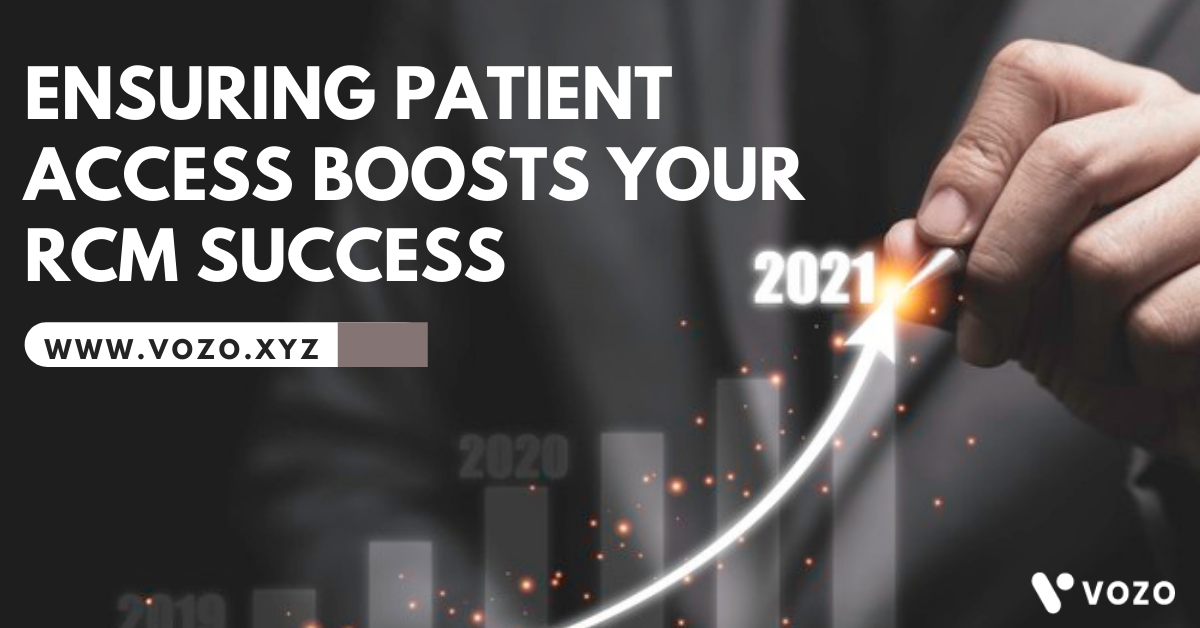Ensuring Patient Access Boosts Your RCM Success
Revenue cycle management (RCM) is a crucial part of healthcare IT which ultimately lowers your administrative costs while improving the revenue cycle and reimbursement. The rapid growth of RCM has just turned from $80 billion in 2016 to $120 billion today and also it will continue to attain huge growth in the future. Why patient access is important in the RCM system? Here is all about the importance of ensuring patient access in revenue cycle management.
What Is Patient Access And Why It Is Important?
Patient access is generally the first encounter a patient will have with a healthcare organization. During the patient access process, revenue cycle groups get their opportunity to get medical billing and reimbursement right the first run through around. For instance, enrollment is a great chance to get and confirm a patient’s demographic and insurance information —significant information focuses required for precise and complete reimbursement later.
Through quiet access, revenue cycle groups can likewise clear patients monetarily for their scheduled services by checking data and talking about and gathering forthright patient financial obligations, like copayments.
Every one of these activities is fundamental to ideal revenue cycle management, making it simpler and quicker to gather patient payments and payer repayment. But getting it right the first time is a key thing for RCM success.
RELATED: Need For Specialized RCM Solution In Healthcare
Challenges Of Patient Access & Revenue Cycle
High or increasing claim denial rates can indicate shortcomings of an organization’s patient access workflows. One in four denials stems from registration and eligibility errors, according to Change Healthcare’s 2020 analysis of denial rates. What’s more, the analysis found that about a quarter of potentially avoidable denials cannot be recovered.
Ensuring patient access staff complete registration and eligibility verification are key to preventing some of the most common and avoidable claim denials. But even these tasks can be a challenge for the 30 percent of health systems relying on manual patient access workflows.
The way patient access is approached in terms of providers and patients is transforming day by day based on the growing digital innovations in the healthcare industry. As patients become more engaged and expectations rise, features like automated and bi-directional communications with our colleagues, better software and technology to increase access to information, and streamlined processes become critical to successful revenue cycle management.
This was especially true during the early days of the COVID-19 pandemic. For example, registering patients while maintaining social distance and quarantine requirements was a major challenge for patient access. In early 2020, the healthcare providers were not digitally engaged with their patients for any kind of registration works. But now, the digital means of registrations is the only way to reach patients. While shifting towards digital, creates an additional challenge to practice staff and the ancillary areas.
These challenges only added to the ones patient access teams already face every day, including long patient wait times and constantly changing payer requirements.
How To Transform Patient Access For RCM Success?
The COVID-19 pandemic created a big turning point in revenue cycle management. So what may the possible ways transform patient access for healthcare RCM success? Digitally engaging with patients through a single and automated healthcare platform may be the right key for successful RCM. For what actions the digital engagement suits well?
Engaging digital with patients for the patient intake process allows healthcare providers to offer secure registration for their patients. The digital forms allow patients to verify their demographics, take a photo of their insurance card and photo ID, at the same time read and sign their form digitally – which will be a convenient process for the patients and providers.
Patients have also quickly adopted digital healthcare tools such as digital appointment reminders, COVID-19 screenings, and more. This kind of patient access tool will surely result in improved patient experience and lower overall healthcare cost to collect for the health system.
RELATED: Electronic Patient Intake Forms: Importance & Benefits
The advanced digital transformation will be the right choice to alleviate many of the challenges of patient access—long wait times, no-shows, and inaccurate data capture. And it also helps to strengthen the relationship between payers involved in the complete healthcare journey of patients.
Healthcare organizations can also integrate their traditional patient access tools with digital patient intakes is the best solution for protecting the bottom line while improving patient experience. Integrating traditional patient access tools with digital intake and engagement is the solution for protecting the bottom line while improving the patient experience.
Summary
The rapid growth of RCM software shows the growing importance of modern RCM systems for physicians and healthcare clinics. Ensuring patient access in your effective revenue cycle management process will help you to achieve revenue cycle success today and so in the future.
Vozo RCM Software -The Right Choice For Your Practice
Vozo offers the best patient-focused RCM software that helps your healthcare organizations ultimately increase cash flow by managing denied claims and improving patient satisfaction. To meet the specific needs of your organization, Vozo RCM benefits you with
- Faster claim payment
- Improved quality of care
- Reduced denial rate
- Accurate patient information
- Reduced outstanding AR and more.
Whether you need industry-based RCM services or RCM support, our dedicated client manager will be available 24/7 for you. Wish to get started with Vozo today? Contact us here.
About the author

With more than 4 years of experience in the dynamic healthcare technology landscape, Sid specializes in crafting compelling content on topics including EHR/EMR, patient portals, healthcare automation, remote patient monitoring, and health information exchange. His expertise lies in translating cutting-edge innovations and intricate topics into engaging narratives that resonate with diverse audiences.













